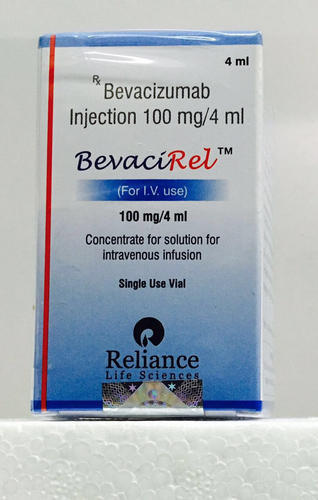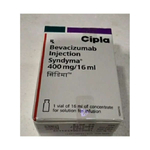bevacirel
When combined with other cancer medicines Bevacirel 400mg Injection is an effective firstline treatment option It is administered through an infusion either through a small needle in your vein or through a port placed under your skin The dosage and duration of treatment will be determined by your doctor who will also monitor you for any signs of an infusion reaction such as high blood pressure and difficulty breathing You will continue to receive Bevacirel 400mg Injection as long as your disease is under control and the side effects are manageable Your doctor will make the decision to discontinue the medication if necessary It is advisable to regularly check your blood pressure and protein levels in urine while taking this medication The most common side effects of Bevacirel 400mg Injection include rectal bleeding changes in taste and headaches Before undergoing any surgical procedure inform your doctor that you are taking this medication as it may slow down wound healing Additionally the medication increases the risk of bleeding so if you experience any unusual bleeding seek immediate medical attention If you are pregnant planning to become pregnant or breastfeeding notify your doctor It is important to disclose all medications you are using to your healthcare team as Bevacirel 400mg Injection may interact with other medicines or be affected by them
Similar Medicines
Available in 3 variations

Bevacirel 100mg Injection 4ml
Bevacizumab (100mg)
vial of 4 ml Injection

Bevacirel 400mg Injection
Bevacirel 400mg Injection
Bevacizumab (400mg)
vial of 16 ml Injection

Bevacirel 400mg Injection 16ml
Bevacizumab (400mg)
vial of 16 ml Injection
Related Faqs
Related Posts

1:15
Which High-Fiber Foods Improve Digestion? Best Fiber Sources!

1:15
Roti vs Rice – Which One Is Healthier and Better for Weight Loss?

1:15
Which Foods Are Packed with Vitamin E? Boost Your Health with These Superfoods!

1:15
Vaginal Fart: Symptoms, Causes, Prevention and More!

1:15
Home Remedies for Dry Cough | Best Foods & Tips for Fast Relief!
Disclaimer : This information is not a substitute for medical advice. Consult your healthcare provider before making any changes to your treatment . Do not ignore or delay professional medical advice based on anything you have seen or read on Medwiki.
bevacirel
Prescription Required
Manufacturer :
Reliance Life SciencesComposition :
Bevacizumab (100mg)




















.svg)
